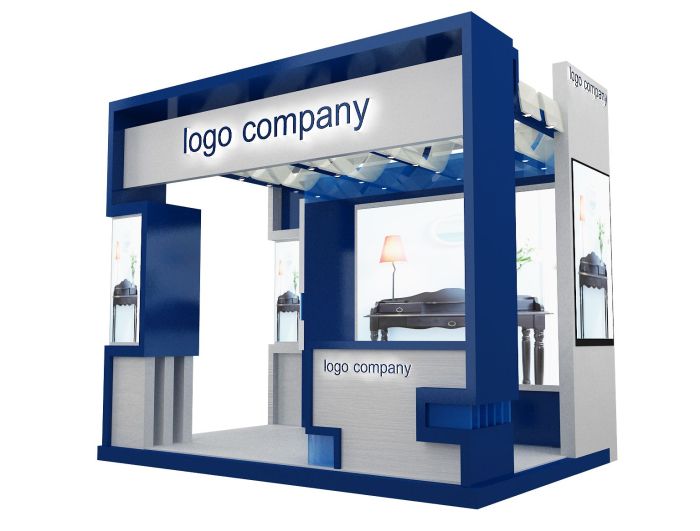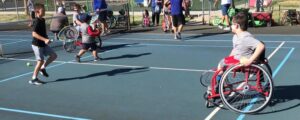
Stand-up paddleboarding (SUP) tips can transform your experience on the water into an unforgettable adventure. Whether you’re a beginner or looking to refine your skills, understanding the essential techniques and safety considerations is key to enjoying this popular sport. From mastering your stance to selecting the right gear, every detail plays a vital role in enhancing your performance and ensuring your safety on the water.
In this discussion, we will delve into the fundamental techniques of paddleboarding, the importance of safety measures, and how to choose the right equipment. You’ll also discover how paddleboarding intersects with other water sports and what legal aspects you need to consider. Plus, we will share ways to connect with the paddleboarding community and participate in exciting events.
Essential Stand-Up Paddleboarding Techniques
Stand-up paddleboarding (SUP) is an enjoyable and accessible water sport that combines elements of surfing and kayaking. Mastering the essential techniques can enhance your experience, ensuring safety and increasing your efficiency on the water. Here, we’ll explore fundamental stances, grip techniques, various paddle strokes, and tips for maintaining balance while standing on the board.
Proper Stance and Grip for Effective Paddling
A stable stance and correct grip are crucial for effective paddling. The proper stance involves positioning your feet shoulder-width apart on the board, with your knees slightly bent to help absorb any movement of the water. Your weight should be evenly distributed, with your hips aligned over your feet for optimal balance. For the grip, hold the paddle with both hands about shoulder-width apart.
Your dominant hand should be on the top of the paddle, while your other hand rests further down the shaft. This grip allows for better control and leverage during paddling. To visualize this, picture a paddle with a T-shaped handle. Your top hand forms a fist around the handle, while your other hand can rest along the paddle’s shaft. This grip not only secures the paddle but also provides greater power in each stroke.
Paddle Strokes and Their Specific Uses
Understanding various paddle strokes and their applications can significantly enhance your paddling efficiency. Each stroke serves a distinct purpose, whether for propulsion, turning, or maintaining speed. The main paddle strokes include:
- Forward Stroke: This stroke propels you forward. Place the blade in the water near your feet and pull it back alongside the board to your hip, keeping your body aligned and using your core for power.
- Backward Stroke: Used for slowing down or reversing direction, this stroke is performed by placing the paddle blade in the water behind your feet and pushing it forward with a gentle, fluid motion.
- Draw Stroke: This stroke allows you to move sideways. With the paddle blade in the water next to the board, pull the blade towards the board to create lateral movement.
- Cross-Bow Stroke: Ideal for turning quickly, this stroke is executed by placing the paddle in the water opposite to the direction you wish to turn and pulling it across the board.
Each stroke requires practice and can be refined by focusing on your core engagement and paddle angle during execution.
Tips for Maintaining Balance While Standing on the Board
Balance is vital when stand-up paddleboarding, particularly for beginners. Here are some effective strategies to enhance your stability on the board:
- Focus on Your Core: Engage your core muscles to maintain stability. A strong core supports your posture and helps counterbalance any shifts in weight.
- Maintain an Even Stance: Keeping your feet shoulder-width apart aids balance. Ensure you’re not too far forward or backward to avoid tipping.
- Keep Your Head Up: Looking ahead, rather than down at your feet, helps maintain balance and encourages a more stable posture.
- Shift Weight Gradually: When turning or adjusting your position, do so slowly to avoid abrupt shifts that could throw you off balance.
Incorporating these balance tips into your practice will lead to a more enjoyable and successful stand-up paddleboarding experience, allowing you to tackle various water conditions with confidence and skill.
Safety Tips for Paddleboarding

Before heading out on your stand-up paddleboarding (SUP) adventure, understanding safety protocols is crucial. The water can be unpredictable, and being well-prepared can significantly enhance your safety and enjoyment. From gear to weather conditions, here are the essential safety tips every paddler should keep in mind.
Importance of Wearing a Personal Flotation Device (PFD)
A personal flotation device (PFD) is a fundamental piece of safety equipment for anyone engaging in paddleboarding. It provides buoyancy and support in case of an unexpected fall into the water, which can happen even to experienced paddlers. When choosing a PFD, consider the following factors:
- Type of PFD: Select a Type III PFD, specifically designed for activities like paddleboarding, which allows for freedom of movement.
- Fit: Ensure the PFD fits snugly but comfortably. It should not ride up over your head when adjusted properly.
- Visibility: Opt for bright colors or reflective materials to enhance visibility to other boaters and swimmers.
Wearing a PFD is not just a legal requirement in many regions, but a responsible choice that can save your life.
Weather Conditions to Be Aware Of
Weather can dramatically change water conditions, making it vital to check forecasts before you embark on your paddleboarding journey. Some critical aspects to consider include:
- Wind Speed: High winds can create rough conditions, making it challenging to control your board. Winds over 10 mph are generally considered unsafe for beginners.
- Rain and Storms: Sudden storms can lead to dangerous situations. Always check for thunderstorm warnings or severe weather alerts.
- Temperature: Cold water can lead to hypothermia. Wear appropriate gear and consider the air and water temperatures before going out.
Always prioritize safety by checking the weather before heading out. A quick look at local forecasts can prevent unsafe situations.
Paddling in Different Water Environments
Different water environments present unique challenges and safety considerations. Understanding these can help you paddle safely and effectively.
- Ocean: Be aware of tides, swells, and currents. It’s essential to know the local surf conditions and avoid paddling alone in challenging areas.
- Lakes: While generally calmer, lakes can still have unexpected weather changes. Look out for boat traffic and establish a safe distance from motorized vessels.
- Rivers: Be cautious of moving water and potential obstacles such as rocks or downed trees. Always scout the waterway for any hazards before proceeding.
Each water environment has its own set of rules and challenges; adapting to these is key to a safe paddling experience.
Paddleboarding Gear and Equipment
Selecting the right gear for paddleboarding is crucial for a successful and enjoyable experience, especially for beginners. Understanding the various types of boards, paddles, and essential accessories can make all the difference. In this section, we’ll explore the fundamental gear needed, compare the characteristics of inflatable versus hard boards, and provide a maintenance checklist to ensure your equipment lasts for many adventures.
Essential Gear for Beginners
For those new to paddleboarding, the first step is to choose appropriate gear that suits your skill level and intended use. The essential items include:
- Paddleboard: The board’s design, size, and weight capacity are vital. Beginners often benefit from wider boards for better stability.
- Paddle: A lightweight paddle with an adjustable length is ideal, allowing for personalized comfort and performance.
- Personal Flotation Device (PFD): Safety is a priority. A properly fitting PFD is required in many areas and provides peace of mind.
- Leash: A leash keeps you connected to your board, preventing it from drifting away if you fall in.
- Clothing and Footwear: Quick-drying attire and water shoes can enhance comfort and protect your feet.
Comparison of Inflatable vs. Hard Boards
When considering what type of paddleboard to purchase, it’s essential to understand the advantages of both inflatable and hard boards, as they cater to different user needs:
| Board Type | Benefits |
|---|---|
| Inflatable Boards |
They often come with a carrying backpack, making them convenient for transport. Additionally, they provide good stability and are durable against impacts. |
| Hard Boards |
They are typically more responsive, making them suitable for experienced paddlers or those interested in racing or touring. |
Checklist for Maintaining Paddleboarding Equipment
Proper maintenance of your paddleboarding gear is essential for longevity and safety. Regularly checking and cleaning your equipment will prevent issues and enhance performance. Here’s a handy checklist:
- Inspect the Paddleboard: Look for dings, cracks, or punctures, and repair them as needed.
- Clean the Board: Rinse with fresh water after use to remove salt, sand, or dirt.
- Check the Leash: Ensure it is functioning and free of any frays or wear.
- Maintain the Paddle: Check for any damages and ensure the blade is securely attached to the shaft.
- Store Properly: Keep your gear in a cool, dry place away from direct sunlight to prevent degradation.
Paddleboarding and Other Water Sports
Paddleboarding, often seen as a standalone activity, can actually enhance your experience in various water sports. The skills and techniques gained from paddleboarding, such as balance, core strength, and paddling techniques, are directly transferable to activities like kayaking and surfing. Additionally, engaging in multiple water sports can provide a well-rounded experience and improve overall performance in each.The relationship between paddleboarding and other water sports emphasizes the importance of agility and awareness on the water.
Paddleboarders often share waterways with kayakers, surfers, and other enthusiasts, making it crucial to understand the dynamics of safe interaction. By honing your paddleboarding skills, you not only improve your own experience but also contribute to a safer environment for everyone involved in these activities.
Complementing Paddleboarding with Other Water Sports
Paddleboarding provides an excellent foundation for transitioning into other water sports. Here are key aspects to consider when exploring this synergy:
Balance and Stability
Paddleboarding enhances your balance, which is vital in both surfing and kayaking. This stability can help you quickly adapt to the shifting surfaces and conditions encountered in these sports.
Paddling Technique
The paddling motion used in paddleboarding is similar to that in kayaking. Developing efficient paddling techniques on a paddleboard can improve your performance and endurance in kayaking.
Wave Riding Skills
For those interested in surfing, the ability to read waves is crucial. Paddleboarding provides you with the opportunity to practice wave dynamics and positioning, which are essential for successful surfing.When transitioning to another sport, consider the following tips to make the shift smoother:
Join a Class or Workshop
Learning the basics through a dedicated class can provide insights into the nuances of each sport. Many paddleboarding schools offer cross-training sessions that incorporate surfing or kayaking techniques.
Practice in Calm Conditions
Start with calm water environments to build confidence in your new skill set. This is particularly important when moving from paddleboarding to surfing, as the ocean can present unpredictable challenges.
Utilize Your Paddleboarding Gear
If you’re transitioning to kayaking, your paddleboard paddle can often double as a kayak paddle, making the switch cost-effective.
Engage with the Community
Connect with local water sports groups or clubs. They can offer valuable tips, share experiences, and provide guidance on best practices for safety and enjoyment in multi-sport settings.By understanding the benefits of paddleboarding in relation to other water sports, and by adhering to safe practices while navigating shared waters, enthusiasts can enjoy a richer and more fulfilling experience across the board.
Legal Considerations for Paddleboarding
Paddleboarding offers a unique way to explore waterways, but it’s essential to be aware of the legal landscape that comes with this enjoyable activity. Different regions have distinct laws and regulations governing paddleboarding, and understanding them can enhance safety and ensure compliance. This section delves into the common legal considerations that paddleboarders must keep in mind.
Common Laws and Regulations for Paddleboarding
Laws regarding paddleboarding can vary widely depending on the location, so it’s crucial to familiarize yourself with the specific regulations of each area. Here are some prevalent legal aspects to consider:
- Registration and Permits: In some states, paddleboards are classified similarly to boats and may require registration or permits. Some localities may also have specific permits for paddleboarding in certain areas.
- Navigation Rules: Paddleboarders are generally subject to the same navigation rules as other watercraft. This includes adhering to right-of-way protocols and complying with any posted signs or markers.
- Restricted Areas: Many waterways have designated areas where paddleboarding is prohibited, such as near marinas, swimming zones, or wildlife sanctuaries. Always look for signage indicating restricted areas to avoid fines.
- Age Restrictions: Some locations impose age restrictions on paddleboarding. It may be mandatory for younger paddlers to wear life jackets or be accompanied by adults.
- Alcohol Regulations: Similar to other water activities, operating a paddleboard while under the influence of alcohol can lead to legal penalties, including fines or arrest.
Respecting Private Property
While exploring waterways, paddleboarders must be cognizant of private property rights. Many lakes, rivers, and coastal areas have adjacent private lands that require paddlers to tread carefully. Respecting these boundaries is essential to maintain a good relationship with property owners. Paddleboarders should:
- Avoid Trespassing: Always stay in public waterways and avoid approaching private docks or boats without permission.
- Understand Access Rights: Research the local laws regarding access to waterways, as some regions may allow for public access across private land to reach water.
- Be Courteous: If you are close to private property, paddle quietly and avoid making a disturbance. Respect the privacy of homeowners to foster a positive environment for all water users.
Liability Issues and Insurance Options
Engaging in paddleboarding comes with its share of risks, and understanding liability issues can help paddlers navigate potential challenges. Here’s what paddleboarders should consider regarding liability and insurance:
- Personal Liability: If an accident occurs while paddleboarding, you may be held liable for damages or injuries to others. This could include collisions with other water users or damage to property.
- Insurance Options: Paddleboarders can explore various insurance options, such as personal liability insurance or paddleboard-specific insurance. This type of insurance can protect against potential legal claims related to accidents or injuries.
- Group Liability: If paddleboarding as part of a group or with a tour company, verify whether the organization carries liability insurance that covers participants.
- Waivers and Releases: Many rental companies and tour operators require participants to sign waivers, releasing them from liability. Read these documents carefully to understand your rights and responsibilities.
Understanding and adhering to legal considerations while paddleboarding not only keeps you safe but also contributes to a respectful and enjoyable experience for everyone on the water.
Paddleboarding Community and Events
The paddleboarding community is vibrant and diverse, offering enthusiasts a chance to connect over their love for the sport. From local clubs to international competitions, there are numerous ways to participate and engage with fellow paddleboarders. Whether you’re a beginner or a seasoned pro, being part of a community can enhance your experience on the water.One of the most exciting aspects of paddleboarding is the variety of events and competitions held worldwide.
These events not only showcase paddling skills but also foster camaraderie among participants.
Popular Paddleboarding Events and Competitions
Numerous paddleboarding events take place annually, attracting participants from different backgrounds. Some noteworthy competitions include:
- Paddleboarding World Championships: Held in various locations, this championship is a premier event for elite paddleboarders to compete on an international stage.
- Gorge Paddle Challenge: Set on the Columbia River in Oregon, this event features a challenging course that attracts paddlers of all skill levels.
- Battle of the Paddle: This iconic event in California includes both race and distance paddling competitions, drawing thousands of spectators and participants.
- SUP 11 City Tour: A unique five-day race through the canals of Friesland in the Netherlands, this event is perfect for those looking for a long-distance challenge.
These events provide thrilling experiences as well as opportunities for networking and building friendships with fellow paddlers.
Connecting with Local Paddleboarding Communities
Engaging with local paddleboarding clubs or communities can enhance your skills and make paddleboarding even more enjoyable. Here are some effective ways to connect:
- Join Local Clubs: Many cities have paddleboarding clubs that organize regular meet-ups, training sessions, and events, making it easy to meet like-minded individuals.
- Social Media Groups: Platforms like Facebook and Instagram have dedicated groups for paddleboarding enthusiasts. Joining these groups can keep you updated on local events and meet-ups.
- Attend Workshops or Clinics: Look for workshops offered in your area that focus on paddleboarding techniques, safety, or fitness to meet fellow paddlers.
- Participate in Local Events: Getting involved in local competitions or casual paddleboard outings can help you forge connections within the community.
These avenues not only help improve your skills but also create lasting friendships and shared experiences in the sport.
Hosting a Paddleboarding Meet-Up or Event
If you’re looking to bring paddleboard enthusiasts together, hosting a meet-up can be a rewarding experience. Here are some suggestions for organizing an event:
- Choose a Location: Select a safe and accessible body of water, ideally with amenities like parking and restrooms.
- Set a Date and Time: Pick a date that avoids major holidays and conflicts with local events to maximize attendance.
- Promote Your Event: Use social media, local community boards, and paddleboarding forums to spread the word about your meet-up.
- Plan Activities: Organize fun activities such as races, techniques workshops, or guided paddling tours to keep participants engaged.
- Prepare Safety Measures: Ensure that all participants are briefed on safety protocols, and have necessary equipment like life jackets available.
By following these steps, you can create a welcoming environment that celebrates the sport and builds community among paddleboarders.
Final Wrap-Up

In conclusion, mastering the art of stand-up paddleboarding is not just about balance and technique; it’s about embracing the joy of being on the water safely and confidently. By exploring the tips Artikeld, you’ll be well-equipped to navigate the waters, participate in community events, and enjoy the thrill of paddleboarding. So grab your board, gather your gear, and paddle on to new adventures!
Quick FAQs
What should I wear for paddleboarding?
Wear comfortable, moisture-wicking clothing and consider a personal flotation device for safety.
Can I paddleboard in the ocean?
Yes, but be mindful of the conditions and ensure you have the necessary safety equipment.
How do I choose the right paddle for my height?
Your paddle should be about 6 to 8 inches taller than you when standing on the board.
What are the benefits of paddleboarding?
Paddleboarding improves balance, strengthens core muscles, and is a great full-body workout.
Is paddleboarding suitable for children?
Yes, children can paddleboard with proper supervision and equipment, ensuring their safety.





